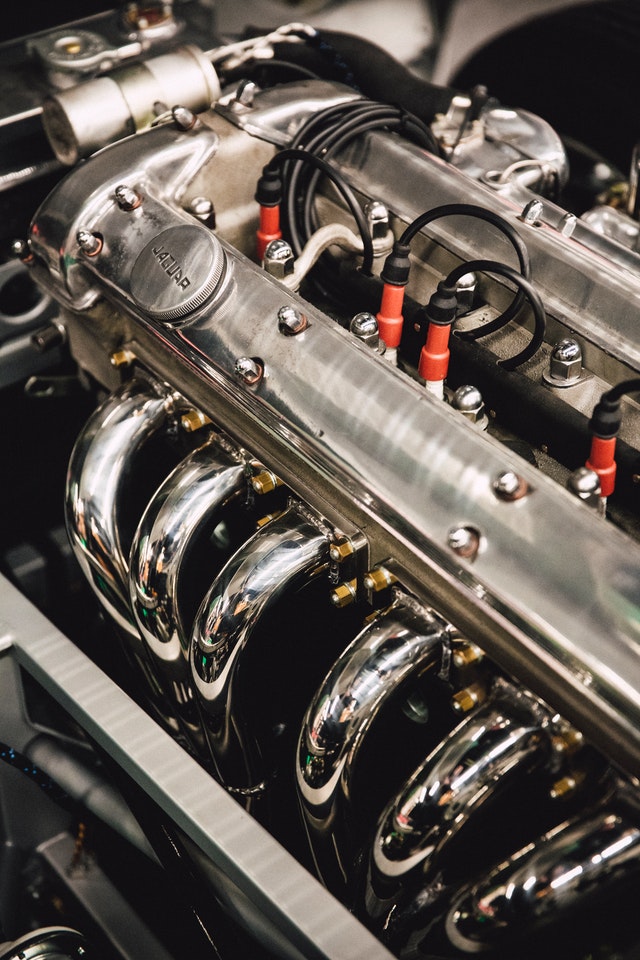
A key component of any vehicle is the radiator. You probably know your car has a radiator, but you might not understand exactly what it does and why it is important. In the most basic sense, the radiator is the heart of a vehicle’s cooling system.
The radiator helps monitor the temperature of the engine and keeps it from overheating. Engines burn fuel to generate power, and this process and the engine’s many moving parts produce a great deal of heat. This heat needs to be vented efficiently or the engine will overheat and begin to break down, which can cause severe damage.
What Does the Radiator Do?
The radiator eliminates excess heat with the help of hoses that cycle liquid coolant from the radiator to the engine. The coolant absorbs the heat, which is then released as hot air through the radiator. Thin metal fins in the radiator help release the heat as the coolant passes through them. Cool air entering the engine through the grille also aids in the process. When your vehicle is not moving, the system has a fan that blows air in and helps reduce the coolant’s temperature. After the coolant moves through the radiator, it recirculates through the engine to absorb more heat.
All radiators have three essential parts: the core, the pressure cap, and the tanks. The core is the main section of the radiator that looks like a large metal block with rows of narrow metal fins. Hot coolant returning from the engine moves through the core to release heat. The pressure cap seals the coolant system and keeps it pressurized. This pressurization keeps the coolant from overflowing so that the entire system can continue to work. The tanks manage the coolant as it flows between the engine and the radiator. You might also say that the coolant itself is another critical component of the system.
What Happens When Radiators Break?
Radiators can fail, especially when they are forced to operate in very hot weather. This risk increases if the radiator is low on coolant or if there is a leak in the system. However, radiators can also fail because of a thermostat that is not functioning correctly, or a mechanical issue with the fan that helps circulate air. In addition, a faulty pressure cap that does not actually pressurize the system will cause the coolant to overflow. In any of these cases, a failed radiator will cause the engine to overheat, which can result in severe damage to the engine.
This is why it’s important to know the signs of a failing radiator. If you catch the problem early, you can avoid damage to the engine. One common sign is unusual rising and falling of the temperature gauge in the instrument cluster on your dashboard. You may also see smoke coming from under the hood of the car or notice coolant, a green liquid, collecting under the car when it’s parked.
Regularly inspect the radiator for rust or other signs that something could be wrong. Once you notice any of these issues, take the vehicle to a professional mechanic.
How Can You Keep Your Radiator in Good Shape?
Regular maintenance is important to keep the radiator working well. Just as most other parts of the vehicle require maintenance, so does the radiator. Be sure to check and replace the radiator hoses regularly, since they are made of rubber and will dry out and break over time. Typically, it’s a good idea to replace the hoses every three years or 36,000 miles. Hoses should never have more than 50,000 miles of driving on them because they will be at high risk of breaking by that point.
In addition, don’t forget to tend to the coolant. Check your vehicle’s coolant level on a regular basis. If the level seems lower each time you look, there is likely a leak in the system. Slow leaks can be especially difficult to detect, so it is important to be diligent and not let your coolant levels get too low. In addition, you should have the coolant flushed every 25,000 miles. The coolant gets contaminated over time and this limits the overall efficacy of the system. However, don’t just replace the coolant—flushing the system helps lubricate it, prevents rust buildup, and will keep the radiator functioning as well as possible.
An overheating engine is a serious problem. No one likes to be stranded on the side of the road, but that can happen if you do not take care of your vehicle’s radiator. In addition, you can permanently damage your engine if you allow it to overheat repeatedly. Because radiator maintenance is relatively infrequent, it can be easy to forget. Pay attention to the schedule in your vehicle’s owner’s manual and be sure to follow it closely—it will keep your radiator in good working condition and protect your engine.